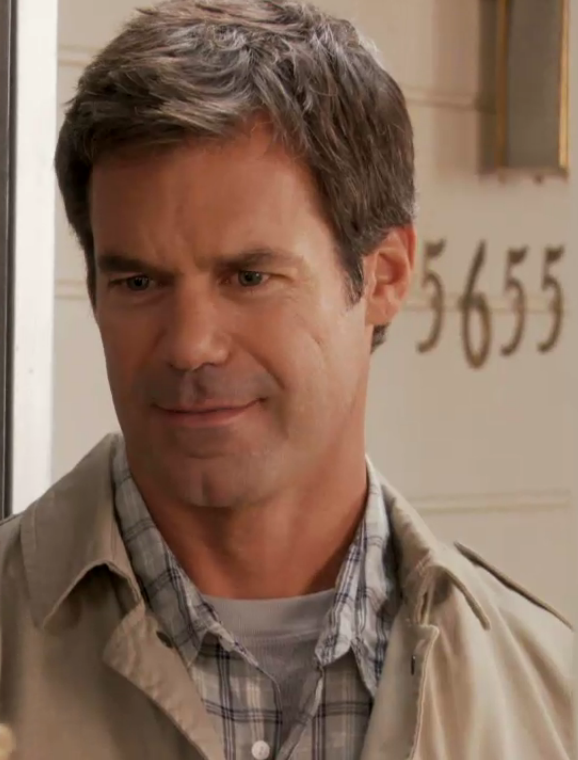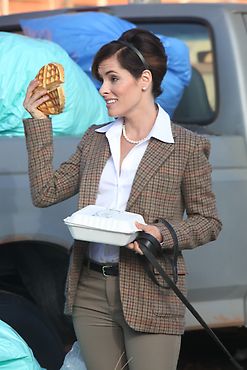

In fact, use them as a continuously-untapped layer to enrich your world and stories. Never underestimate your secondary characters. They are living and breathing Pawnee citizens.

CAST OF PARKS AND REC FREDDY SPAGHETTI SERIES
The series excels with them for one simple reason: they are not just obstacles or sources of conflicts for our protagonists, nor are they just jokes in of themselves. The same holds true for the cavalcade of recurring characters. We learned of Dennis Feinstein’s existence several seasons before Jason Mantzoukas started inhabiting the role (in “ Indianapolis” (3×06)). The Gryzzl startup (and its CEO) were objects of ridicule as well as catalysts for conflict in the final two seasons. JJ’s Diner is as identifiable with Parks as Apu’s Kwik-E-Mart is to The Simpsons. Parks always tries to deepen Pawnee (and Eagleton), especially when it helps both story and humor. The overarching commonality however is that both shows excel in making their respective towns three-dimensional. Citizens are easily swayed to vote against their own best interests on multiple occasions. Both shows also brilliantly use the mob mentality. Many comparisons can be made between Parks and FOX’s The Simpsons: talking heads (Perd Hapley/Kent Brockman), sex scandal-embroiled politicians (Dexhart/Quimby), rival towns (Pawnee/Springfield vs. Lesson 2: Supporting characters are as important as your main cast
CAST OF PARKS AND REC FREDDY SPAGHETTI HOW TO
Learn how to move past the limitations of your own structure and style, or thrive within them. In fact, the series almost completely abandoned its format in the latter-season episode “ The Johnny Karate Super Awesome Musical Explosion Show” (7×10).Īt the end of the day, Parks and Recreation was able (and willing) to grow out of The Office‘s shadow because it transcended the format it was born in. As long as it services them as well as their story, there is no “real” reason not have a camera present. Hell, we even saw our characters evolve right up to the year 2048. We were treated with awkward and multiple angles, jump-cuts, and a less voyeuristic approach overall. The hell with confessionals rooted in realism. It isn’t meant to be a story element in of itself (unlike, again, The Office).įorget using the meta structure of a documentary crew as one of your plotlines. This specific mockumentary format is only a “take” on the government world. The idea is (or was) about contrasting what we see and what is said, not experiencing a fake documentary. Notice how there is no mention of the mockumentary style as a narrative component. Plus, the single-camera format can be alienating, and the talking heads help us relate directly to the audience, and provide breaks in the action. We wanted this to be a mockumentary show because in the world of government, the difference between what goes on behind closed doors and what people present to the public is a huge issue. One could even argue the series thrived in spite of it.Ĭo-creator Michael Schur explained back in 2011 why the show used the specific format: Sure, there have been a few lackluster episodes, but its (somewhat-)handheld format never shackled the series. Six years later, Parks now stands as one of the greatest mockumentary-style comedies ever to appear on TV. Its first season was promptly ridiculed and set aside. Leslie was reduced as Michael Scott’s dimwitted protagonist clone, and the tone of the show was being described as “mean-spirited”.

It didn’t help that both were basically made by the same people. When Parks and Recreation started airing in 2009, a large amount of viewers quickly dismissed it as a “carbon copy” of NBC’s The Office. Lesson 1: Don’t let a format define your story Time to take a look at this amazing mockumentary-style comedy. From absurd government action to now-iconic characters, the show offered us some of the funniest moments in recent television history. It was only a few months ago that NBC’s Parks and Recreation concluded its seven-season run. Screenwriting lessons from tackles series past and present, analyzing them through the prism of screenwriting. A key part of writing for television is watching television.


 0 kommentar(er)
0 kommentar(er)
